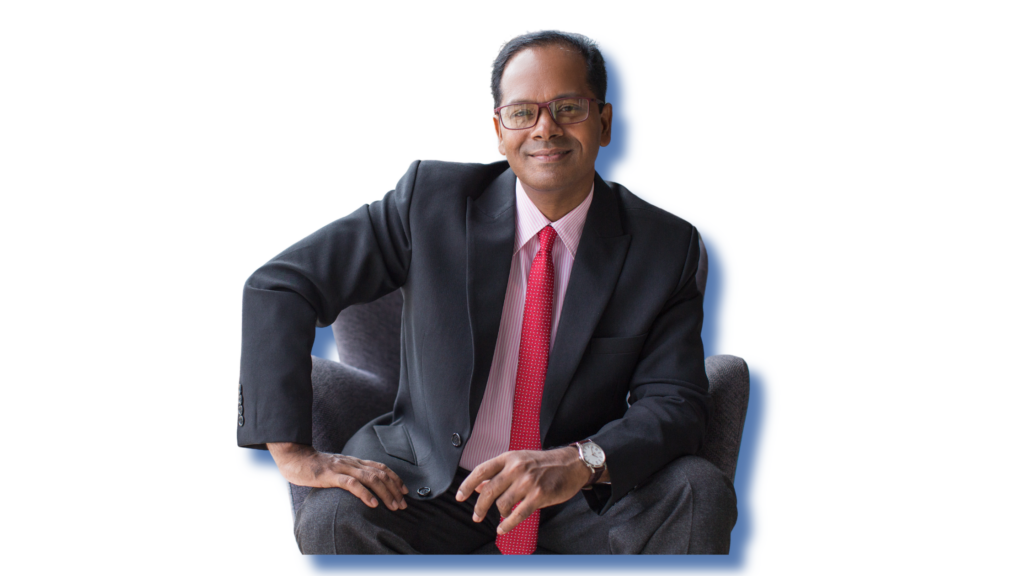Last week, I concluded what will likely be just a first installment of The Leader’s Edge multipart series. After all, the challenges of leadership in today’s ever-evolving business landscape feel endless.
If you’ve just tuned in, I invite you to read back through the whole series, in which we followed a cohort of leaders from the fictionalized Horizons Tech organization as they engaged in a leadership development program. Through the lens of leaders like Mike, Vijay, Amir, and Angie, we explored the challenges and growth potential of expanding your leadership range and what we here at TeamCatapult refer to as “communicative competence” — a foundational skill for leaders today who are navigating the high stakes of uncertainty and change.
Today, I thought I’d wrap up with just a few thoughts, knowing that there will likely be more to come.
Behavior change is hard

When facing new or recurring challenges, we tend to default to doing the things we already know how to do. We reach for approaches that we have reached for before and that feel familiar, even when we know they’ve only gotten us so far in the past. But this tendency toward the familiar can manifest as the definition of insanity: doing the same thing over and over again and expecting a different result. At least, that’s the well-worn and always resonant definition passed down from Albert Einstein. Who are we to disagree?
How often have we each been in a high-stakes situation, realizing that we were worried, scared, frustrated, anxious, or exhausted from continuing to experience the same results over and over? Knowing that we likely needed to do something different, yet having absolutely no idea what we could do differently?
Changing behavior is tricky. We each have well-worn patterns of behavior that exist for a really good reason. Identity-forming stories from our past sit just below our behavior — stories that form the basis for what we believe about ourselves, what we believe about others, what we believe is possible, and what we believe about how to get there. These stories are why we do what we do. They tell us that our behavior is appropriate to the situation — and it’s hard to catch sight of where this might not be the case, especially because our stories and current behaviors have often served us well. In fact, they are often what have gotten us the successes we have today. Our stories are very self-reinforcing like that.
But our inability to see the invisible costs of our actions — including our impact on our team dynamic — can lead to toxic team cultures, individual burnout, and product deliveries that fall far short of their potential.
As leaders, so much of our work is less about knowing all the answers and so much more about working with other humans. From individual contributors to CEOs, working with other humans is how we move work along and bring about change in today’s complex organizations.
So when we start having the same conversations over and over again, or it feels like we’re not making headway where we expect to, our tendency will be to resort to a tool or technique to help us improve. Like using dot voting when a team is challenged by decision making or RACI charts for confusion about roles and responsibilities. But repetitive or stuck conversations and frustrating situations are an invitation to look at behavior — not tools.
More often than not, tools like dot voting, RACI charts, or prioritization models make us feel like we’re moving forward. But they aren’t doing anything to address the underlying issues that led us to this point, and they certainly won’t prevent us from reaching the same kinds of impasses again.
We need to be looking at behavior change — both our own and in the system-level dynamics — to find the answers about what might be holding us back.
This work is not for the faint of heart. It’s not an easy solution. It requires space and reflection. It requires us to take an unflinching look inward, at ourselves. It requires us to honor the good parts of our behaviors as well as to acknowledge and course correct the parts that have served us well in the past but have started holding us back. And, most importantly, the work of behavior change requires us to engage in effective and productive conversations — ones where we can talk about the most difficult experiences, share authentically about what’s happening for each of us, and co-create a way forward.
Behavior change in oneself and on teams is rarely quick, and it’s almost never straightforward. The kinds of conversations that cultivate it require time, space, and going slower. Yet like any worthwhile activity, they are a practice — meaning you can get better at them, they can become easier with time, and they can even become part of the culture. Communicative competence and the ability to hold effective, productive conversation can, over time, simply become the “way we do things around here.”
As the skills of communicative competence build and grow, conversations can take less time and yet be more meaningful than any conversation you’ve had in the past. They can propel you forward rather than hold you back. They can lighten the load of the collective group rather than be heavy for one person.
As participants in TeamCatapult’s leadership programming can attest, building the profound skill set of communicative competence takes a willingness to stay in it — but it is always worth it.

Responding in the face of difference
So much of behavior change has to do with how we encounter and navigate difference — difference between ourselves and others, differences of opinion on our teams, different perspectives on a situation, different models for communication, different belief systems about how people should engage and how things should get done, etc.
When we encounter difference, we have a choice about how we respond.
- We can exit the process or conversation
- We can ignore it and move the process or conversation toward something more familiar and comfortable
- We can choose to engage with the difference and be curious
Often, leaders and teams default to the first two options — exit or avoid. And when they choose to engage, they often try to overcome differences by learning some new content, tool, theory, or strategy.
But more often than not, the thing we need to learn is more about how we show up and the behavior that we express — specifically, how to engage with curiosity while staying in conversations that can be difficult and uncomfortable.
Facing difference has been a major theme of The Leader’s Edge series. In Part 2, for example, Mike was majorly challenged by a different perspective on the value of time. He thought he would gain time by bailing on the program — and chances are, he might tell you that he did, indeed, gain back the hours he had set aside for the program. But it was likely a false sense of achievement. What it likely gained was actually time for repeating the same conversations and navigating the same group communication patterns over and over again. Doing the same thing on repeat while expecting different results.
Mike’s impatience and unwillingness to invest time in a different approach to leading his team cost him the opportunity to see the role that he was playing in colluding with the organizational pattern of firefighting problems and applying bandaid responses to endemic issues. While Mike had been rewarded for his firefighting strengths, it was no doubt taking a personal toll on him. Firefighting without addressing the underlying communication patterns and interpersonal dynamics is like being on a treadmill. Temporary or stop-gap solutions don’t solve ongoing issues. Nothing changes down the line. Nothing improves in the future.
If you are a leader who’s unwilling to take the time to cultivate behavior change by exploring your relationship to difference, you’re asking your people to join you on an endless treadmill loop that will never quite get you where you want to go.
In Part 3, Part 4, and Part 5, Vijay and Amir struggled with difference, too. For Vijay, it was how to ensure he was actually inviting different perspectives to be voiced on his team — something he inherently felt the value in. He was ready to meet different viewpoints with open curiosity, but hadn’t realized that his team dynamic might be preventing them from being surfaced in the first place.
Amir, meanwhile, had to face his demons head on so that he could become more comfortable with hearing different perspectives and not feeling them as an attack on his own self worth. For his entire career, he had spent a lot of time and energy steering conversations and setting the team’s direction without ever leaving room for disagreement or discussion. It was far more comfortable for him to expend the energy of directing the team’s sails all on his own than it was to hear that his team might not agree with him.

As a leader once said to me, “When someone holds up a mirror for you and, without judgment, asks you to take a look at what you are doing and how it’s contributing to issues you’ve been blaming on others or on the situation, it can be the most confronting experience of your life.” They continued, “But the gifts will be in the new actions that you can take from that new awareness the next time that pattern shows up.”
Communicative competence + leadership range = real change
It is no secret that organizations today are suffering from a range of endemic issues, from quiet quitting and challenging transitions to a lack of diversity and recurrent downturns/layoffs.
These are, in essence, symptoms of an overarching issue: organizational culture. As I stated in the beginning of this series, investing in leadership development is critical if organizations want to course correct the trajectory of upheaval and change, low morale, teams not reaching their potential, late deliveries, and subpar outcomes. Because when it comes to organizational culture, leaders bring the weather.

This is certainly what Angie discovered in Part 6. Her participation in the Horizons Tech leadership development program yielded incalculable value to her as a leader and enabled her to create a sea change on her teams. She had been trying to do it all, and, somewhere along the line, she had become the kind of leader she never wanted to be — and that no one wants to have. Without meaning to, she had been slowly eroding her team’s confidence in their ability to find their own solutions and found herself in the overwhelming and unsustainable position of having to micromanage every step to delivery.
For her, the program’s emphasis on building communicative competence enabled her to navigate and cultivate group dynamics with a much greater sense of self-awareness and a substantially higher ability to “read the room.” For the first time, she was able to facilitate authentic conversations even in the midst of high-stakes conversations. She was able to help her team tap into their collective intelligence to solve problems more effectively and efficiently without needing or expecting her to step in at every step of the team process.
In short, she was able to develop a team that produced more effectively and efficiently than it had been able to previously by empowering them in their own process:
- They felt individually and collectively valued for their ideas and contributions
- They felt more confident in their shared ability to deliver outcomes they were proud of
- They were excited to come to work, saw themselves as team players, and felt more invested in their organization
And where Angie had previously felt overwhelmed and constantly panicked in her leadership role, she now felt grounded, capable, and prepared to move fluidly through what she came to recognize as her “leadership range.”

The “What Now?” Action Plan and Takeaways
More than anything else, my hope is that The Leader’s Edge has inspired you to look at the ‘problems’ within your team differently and take a different approach. But sometimes it’s hard to know where to start.
So, first and foremost, I invite you to connect with us here at TeamCatapult to explore options for bringing our team into your organization. Our programming is designed for leaders and leadership teams just like yours — so let’s get the conversation started!
[ Connect with TeamCatapult ]
We also have an upcoming Masterclass — a 3-hour diagnostic lab designed for team leaders. Titled “Diagnosing Your Team’s Dysfunction— and the Role You Play In It,” this Masterclass promises to be eye-opening and game-changing. You can join as an individual, so we look forward to seeing you there!
And don’t forget that my newest workbook, Building a Model for Leading Change, was designed with you in mind — you can always pick it up and start there.
For now, I want to offer you some key takeaways and foundational concepts from the work that Angie, Vijay, and Amir engaged with over the course of The Leader’s Edge. You can take these with you, starting today, and see what shifts as a result.
- Use repetitive and/or stuck conversations as a signal that something needs to shift in the conversation. Be curious about what it might be and what part you might be playing in the pattern.
- Create space for more dialogue and less monologue — believe that effective and open conversations can give us what we need.
- Establish connection before moving into content. People need to get present in the moment, both in relationship to the topic and to the group as a whole. Use a check-in process as a way to get everyone’s voice into the space and warm up.
- Welcome opposition — even when it feels scary. You can either invite the opposition in the room or it will impact you outside the room. Unvoiced opposition manifests in all sorts of unproductive ways, so your best course of action is to make space for it in the moment.
- Shift your attention from having the answers to creating the environment where the group can find its own solutions.
- Pay attention to relationships — it’s a “must” for effective leadership and should not be dismissed as “group therapy.” If you’re not paying attention to relationships as a leader, you’re not leading.
Don’t forget: there are no silver bullets, and communicative competence is not the work of a day. Keep going, engage openly and with curiosity, and be kind with yourself and others.
We look forward to connecting with you when you’re ready, and don’t forget to keep an eye out for future installations of The Leader’s Edge!


























